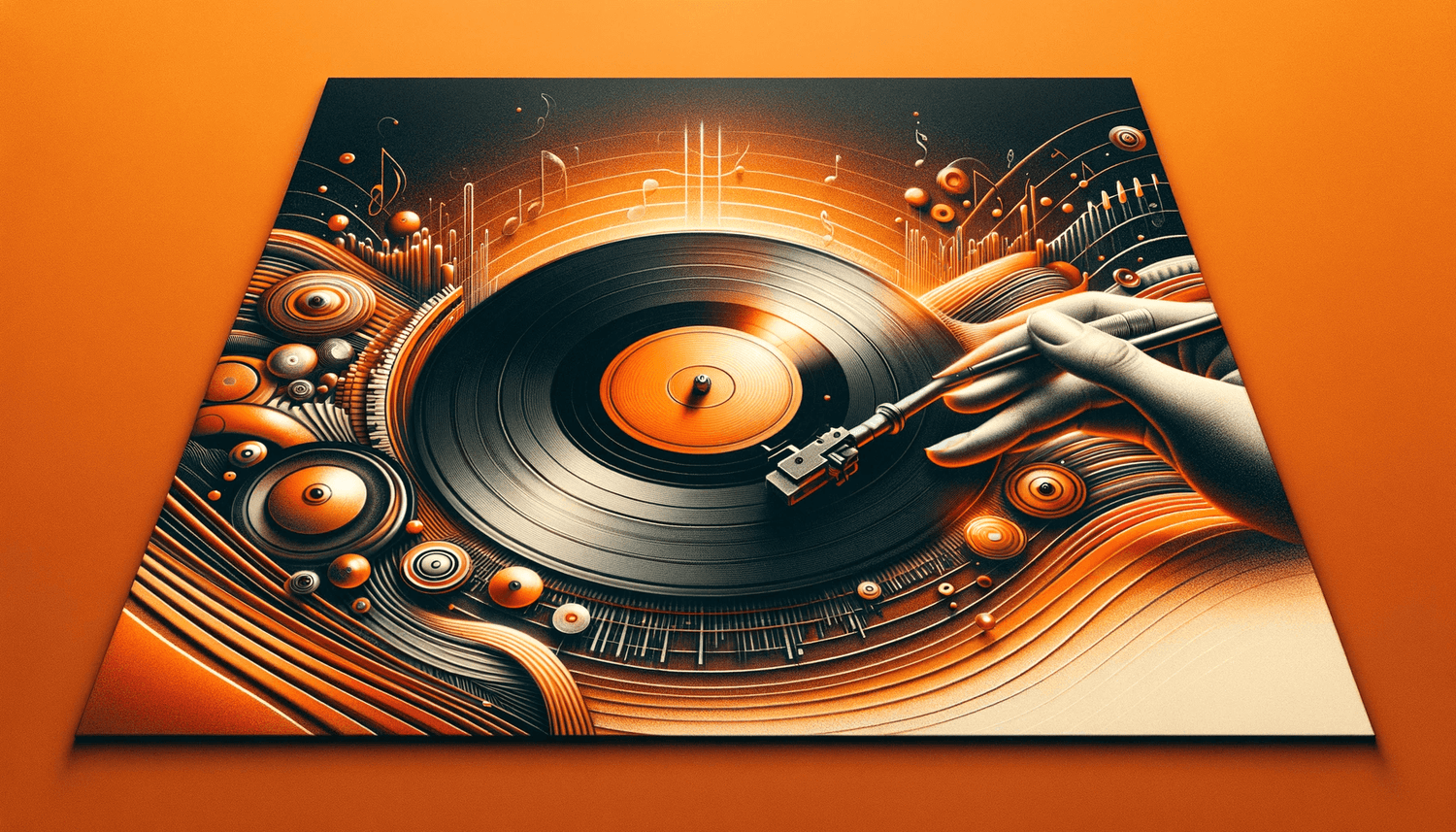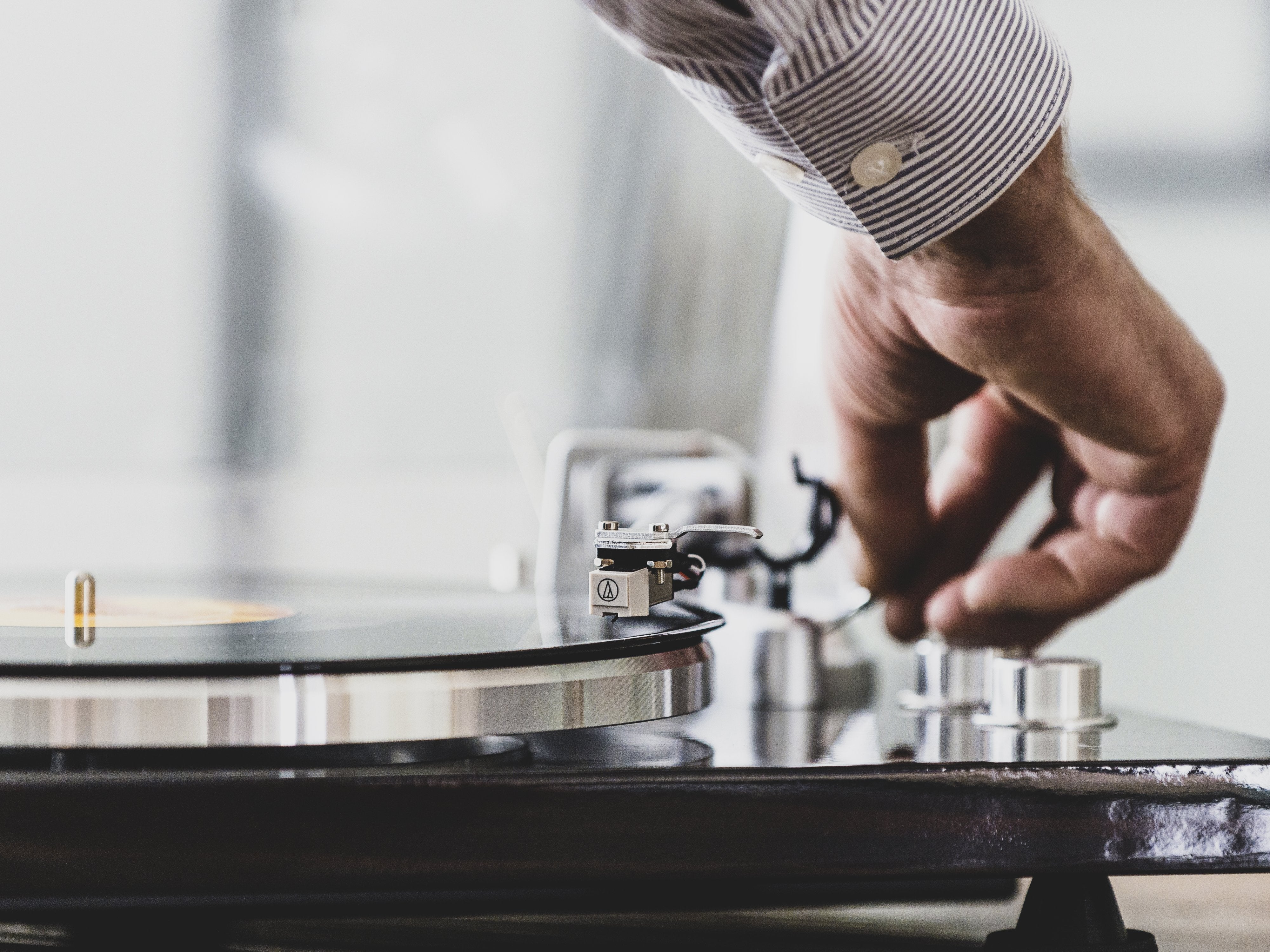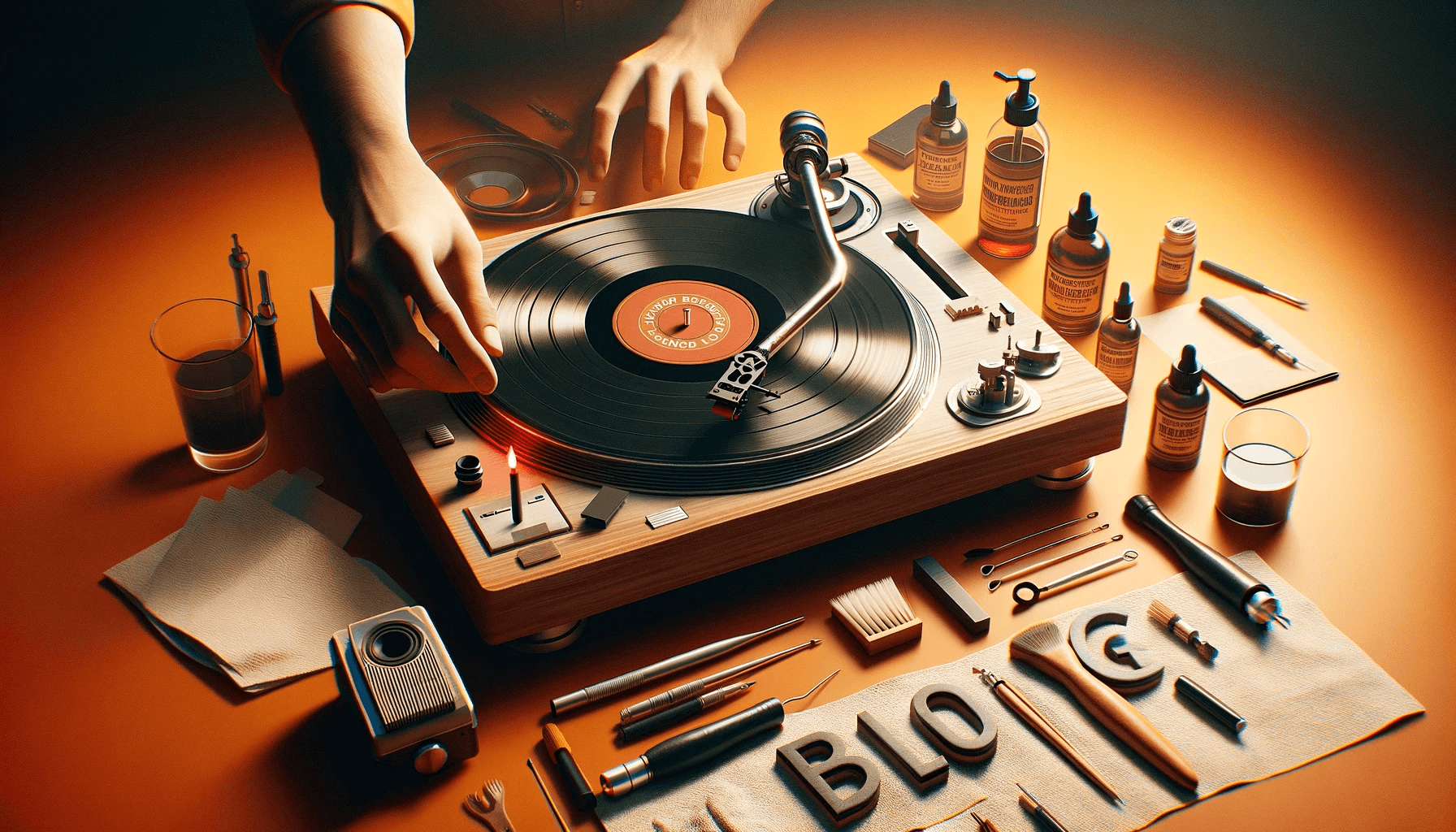In an era where digital music reigns supreme, the vinyl record has not just survived but thrived, charming music enthusiasts across generations. Its resurgence in popularity is more than just a nostalgic wave; it's a testament to the unique listening experience that vinyl offers.
But what is it about vinyl records that captivates audiophiles and casual listeners alike? Why do these grooved discs continue to hold a special place in the hearts of music lovers, even in the heart of the digital age?
This intrigue leads us to delve into the essence of vinyl's sound quality. What makes it distinctively superior, or at least different, from the plethora of modern audio formats available today?
Our exploration will traverse three core areas: firstly, the physical makeup of vinyl records, understanding the materials and processes that contribute to their sound production. Secondly, we will look into the technology of record players, uncovering how these machines extract and amplify sound from mere grooves. And lastly, we will seek expert insights, gathering opinions and facts from sound engineers and avid vinyl listeners to uncover the true soul of vinyl's enduring appeal.
The Physical Composition of Vinyl Records
The allure of vinyl records lies not just in their auditory charm but also in their physical composition. Central to their makeup is a material known as polyvinyl chloride, commonly abbreviated as PVC. This particular plastic is chosen for its durability and flexibility, crucial qualities for withstanding the rigours of repeated play while maintaining the integrity of the recorded sound.
The production of a vinyl record is a delicate balance of art and science. It begins with the creation of a master disc, typically made from a lacquer-coated aluminium disc. Music is etched onto this disc by a lathe, which carves grooves into the surface.
These grooves are literal representations of the sound waves of the recording. The depth, width, and spacing of these grooves are meticulously controlled, as they directly influence the sound quality. Deeper and wider grooves can produce richer, more robust sounds but at the expense of shorter playback time due to the space they occupy on the record.
Once the master disc is prepared, it is used to create a stamper, which then presses the grooves onto the PVC discs, forming the records we see and use. The precision in this process is paramount, as any deviation can significantly affect the final sound output.
Another critical aspect of vinyl records is their thickness and weight. Standard records are typically around 120 to 130 grams, but audiophile-grade records can weigh as much as 180 to 200 grams. Thicker and heavier records are often perceived to offer better sound quality.
The added weight and thickness provide increased stability and less resonance during playback, reducing potential distortion and ensuring a cleaner sound. This is particularly noticeable on high-end turntables, where every nuance in sound reproduction is discernible.
In sum, the physical composition of vinyl records – from the materials used to the intricate process of cutting grooves, to the thickness and weight of the final product – plays an essential role in defining the unique sound quality that vinyl aficionados cherish. This tangible aspect of vinyl not only contributes to its sonic characteristics but also adds to the overall sensory experience of engaging with music in its most classic form.
The Mechanics of Sound Reproduction
Understanding the mechanics of how record players transform the physical grooves on a vinyl record into audible sound is a fascinating journey through both history and technology. The process is a symphony of mechanical and electrical components working in harmony, from the needle (or stylus) making contact with the record to the sound emanating from the speakers.
From Needle to Speaker: The Journey of Sound
Stylus Contact with Vinyl Grooves: It all begins with the stylus, a small needle typically made of diamond or another hard material, making contact with the grooves on the record. As the record spins, the stylus traces the undulations in these grooves. These undulations are analog representations of the original sound waves.
Transduction into Electrical Signals: The movements of the stylus as it follows the grooves are converted into electrical signals. This conversion is achieved through a cartridge located at the end of the tonearm. The cartridge houses a tiny magnet and a coil of wire. As the stylus moves, it causes the magnet to move within the coil, generating an electrical signal that mirrors the original sound wave's shape and amplitude.
Amplification of the Signal: The electrical signals generated are quite faint and need amplification. This is where the preamplifier comes in, boosting the signal to a level where it can be further processed by the amplifier.
Final Amplification and Output to Speakers: After pre-amplification, the signal is fed into the amplifier, where it is further strengthened and sent to the speakers. The speakers then convert these electrical signals back into sound waves, producing the music we hear.
Analogue Sound of Vinyl vs Digital Formats
Comparing vinyl's analog sound with digital formats opens a window into the fundamental differences in sound reproduction. Vinyl records store sound in a continuous form; the grooves' undulations are a direct physical representation of the original sound waves. This analog format is often credited with producing a warmer, richer sound due to its ability to capture the full wave of audio, including subtle nuances that can be lost in digital formats.
Digital formats, on the other hand, represent sound in a series of binary numbers. These numbers correspond to samples taken from the original analog sound at regular intervals. The process of converting analog sound into digital form (and back again for playback) involves a bit of data approximation, which can sometimes result in a loss of audio fidelity, especially in the higher and lower ends of the sound spectrum. However, digital formats benefit from being immune to the physical wear and tear that can degrade the quality of vinyl records over time.
In conclusion, the journey of sound from a vinyl record to our ears is a testament to the ingenuity of analog technology. While digital formats offer precision and convenience, vinyl provides a unique listening experience, cherished for its warmth and depth – a direct connection to the original live performance.
Technological Enhancements and Modern Record Players
The resurgence of vinyl records has been accompanied by significant technological advancements in turntable design and needle technology. These innovations have not only enhanced the vinyl listening experience but also addressed some of the format's traditional shortcomings.
Advancements in Turntable Technology
Precision Engineering for Stable Rotation: Modern turntables have greatly benefited from precision engineering, resulting in more stable and consistent rotation speeds. This stability is crucial for maintaining pitch accuracy and reducing wow and flutter – common issues in older turntables.
Advanced Motor Systems: The introduction of direct drive and advanced belt drive systems has improved turntable performance. Direct drive turntables, where the motor is directly connected to the platter, offer quick start-up times and consistent speed. Belt drive systems, where the motor is decoupled from the platter, can reduce motor noise transmission, enhancing audio clarity.
Vibration Damping and Isolation: Modern turntables incorporate sophisticated materials and designs to dampen vibrations. These include the use of heavy plinths, shock-absorbent feet, and isolated motor designs. Reducing vibration is key to preventing needle skips and maintaining sound fidelity.
Automated Systems: Some modern turntables offer automated features, like auto-start and auto-return, making them more user-friendly and reducing the risk of scratching records.
Innovations in Needle (Stylus) Technology
Improved Stylus Materials: The evolution of stylus materials, moving from steel to diamond or advanced synthetic materials, has significantly improved tracking accuracy and reduced record wear.
Better Cartridge Designs: Modern cartridges offer improved tracking and channel separation, leading to a wider stereo image and clearer sound reproduction. Moving coil and moving magnet designs each offer distinct advantages in sound quality and replaceability.
Optimised Tracking Force: Advancements in tonearm design allow for more precise adjustments of tracking force and anti-skate settings, ensuring that the stylus tracks the grooves accurately without causing excessive wear.
Models Known for Superior Sound Quality
Rega Planar Series: The Rega Planar turntables, particularly the Planar 3, are renowned for their excellent build quality and sound performance. They are praised for their precision engineering and high-fidelity sound reproduction.
Technics SL-1200 Series: A legend in the DJ world, the Technics SL-1200 series, especially the SL-1200MK7, is also highly regarded for home audio. It offers a direct drive system known for its durability and consistent speed.
Pro-Ject Debut Carbon: The Pro-Ject Debut Carbon is celebrated for its carbon fibre tonearm, which offers stiffness and reduced resonance, enhancing sound clarity. It's a popular choice for its blend of quality and affordability.
The Listener's Experience
The experience of listening to vinyl records transcends mere auditory stimulation, enveloping the listener in a rich tapestry of sensory and psychological elements that define its unique appeal.
Tactile and Auditory Aspects
The Tactile Ritual: Engaging with vinyl is a hands-on experience. From the moment one sifts through a collection, selects a record, and reverently removes it from its sleeve, there's a tangible connection. The act of placing the record on the turntable, carefully lowering the needle, and watching the record spin creates a ritualistic experience, heightening anticipation and engagement.
Auditory Warmth and Nuance: Vinyl playback is characterised by a warm, resonant sound often described as more 'natural' or 'authentic' than digital formats. This warmth comes from the analog nature of vinyl, capturing the full range of sound, including subtle nuances, overtones, and a slight natural distortion that many listeners find pleasing. The crackles and pops, often associated with vinyl, also add to its character, creating a nostalgic or 'lived-in' feel.
The Soundstage and Depth: Vinyl is praised for its ability to create a broad, immersive soundstage. The depth and spacing of sounds allow listeners to perceive individual instruments and vocals more distinctly, as if present at a live performance.
Psychological Factors Contributing to Perceived Superiority
Nostalgia and Emotional Connection: For many, vinyl records are steeped in nostalgia, evoking memories and emotions from past times. This emotional connection can greatly enhance the perceived quality of the sound.
Active Listening and Engagement: The vinyl experience demands active participation, from choosing and handling the record to flipping sides. This engagement fosters a more focused listening environment, encouraging listeners to fully immerse themselves in the music, which can make the experience more rewarding.
Visual and Physical Presence: The physical presence of a vinyl record, with its large artwork and tangible size, offers a visual and tactile pleasure that digital formats lack. This presence can create a stronger bond between the listener and the music.
The Rarity and Collectability Factor: Vinyl records, especially rare editions, are often considered collectables. Owning a unique or limited edition record can bring a sense of pride and exclusivity, enhancing the listening experience.
Perception of Authenticity: There's a widespread belief among vinyl enthusiasts that listening to an album on vinyl is how the artist intended it to be heard. This perception of authenticity and fidelity to the artist's vision can make the listening experience more profound and satisfying.
In essence, the vinyl listening experience is a holistic one, engaging multiple senses and tapping into psychological elements that elevate it beyond just listening to music. It's a blend of tactile engagement, auditory richness, emotional resonance, and a sense of authenticity that makes vinyl a uniquely rewarding experience for its devotees.
Conclusion
The journey through the world of vinyl records is as enchanting as it is enlightening. We've explored the multifaceted aspects that contribute to the enduring allure and resurgence of vinyl in a digital age. From the physical composition of records, embodying the very essence of sound in their grooves, to the intricate mechanics of sound reproduction, each element plays a vital role in crafting the unique vinyl experience.
We delved into the technological advancements that have elevated turntables from mere music players to sophisticated audio equipment, enhancing the vinyl listening experience. The innovations in turntable and stylus design not only improve sound quality but also make vinyl more accessible and enjoyable for a new generation.
Beyond the technology, we uncovered the deep sensory and psychological elements that make vinyl special. The tactile ritual of handling records, the warm and nuanced auditory experience, and the emotional and psychological connections they foster, all combine to create a listening experience that is unmatched in the realm of digital formats.
Vinyl records hold a unique place in the cultural and musical landscape. They are not just relics of the past but symbols of audio artistry and emotional connection. Their resurgence is a testament to their timeless appeal, offering a listening experience that is as much about the journey as it is about the destination.
We invite you, our readers, to rediscover this magical format. Whether you're a long-time vinyl enthusiast or new to the world of records, there's something undeniably special about dropping the needle on a record and immersing yourself in the rich, warm sounds that emanate. It's an experience that goes beyond just listening to music—it's about connecting with music in its most tangible form.



